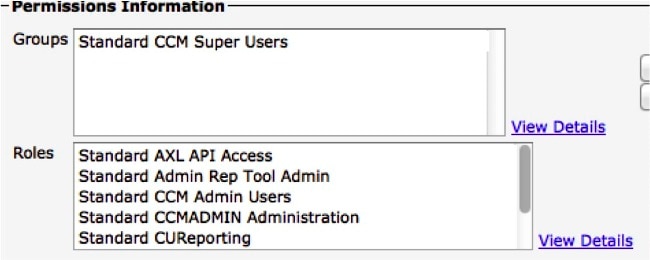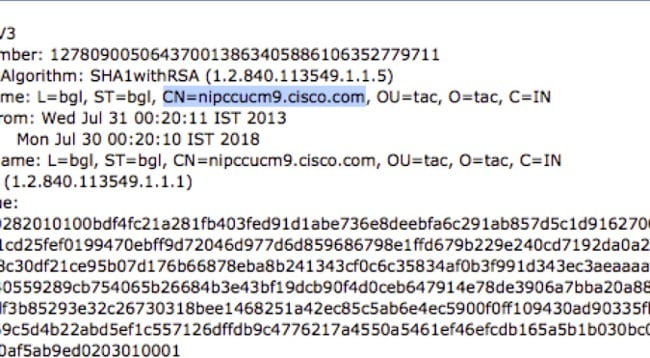Configure the CUSM for Integration with the CUCM
Available Languages
Contents
Introduction
This document describes how to configure the Cisco Unified Survivable Remote Site Telephony (SRST) Manager (CUSM) for integration with the Cisco Unified Communications Manager (CUCM).
Prerequisites
Requirements
Cisco recommends that you have knowledge of these topics:
- Cisco Call Manager Express (CME)
- CUCM
- CUSM
- SRST
Components Used
The information in this document is based on these software and hardware versions:
- CUSM installed from an Open Virtualization Application (OVA) template
- CUCM Version 8.6 or later
- CME Version 8.6 or later
The information in this document was created from the devices in a specific lab environment. All of the devices used in this document started with a cleared (default) configuration. If your network is live, make sure that you understand the potential impact of any command.
Background Information
The CUSM operates as a part of the Cisco Enhanced Survivable Remote Site Telephony (E-SRST) solution.
The SRST and E-SRST solutions provide telephone functionality in remote branch sites during temporary WAN outages that prevent communication between the central site and the branch site.
Configure
This section describes how to configure the CUSM and the associated components for integration with the CUCM.
Configure the CUCM
Complete these steps in order to configure the CUCM for integration with the CUSM:
- Log into the CUCM.
- Create an application user, and assign the Standard AXL API Access role:

- Enter the show network eth0 command in order to verify whether the CUCM is defined via a Fully Qualified Domain Name (FQDN) (such as CCMpub.cisco.com). The CUCM server must be defined via an FQDN.
- Ensure that the Domain Name System (DNS) server to which the CUCM points has both forward and reverse lookup configured for the CUCM hostname or IP address. If not, the integration with the CUSM will fail.
- Configure the device pools on the CUCM so that the CUSM can retrieve the SRST references that are associated to the device pools and provision the sites appropriately.
Configure the CUSM
Complete these steps in order to configure the CUSM:
- Navigate to the CUSM Setup Wizard and define the global SRST Manager settings:
- Define your voicemail Pilot setting preference, and then click Next.
- Select whether you want to integrate the SRST Manager and the branch site routers via Transport Layer Security (TLS), and then click Finish.
- Define your voicemail Pilot setting preference, and then click Next.
- Navigate to System > Domain Name System Settings.
- Add a DNS server.
- Add the hostname and domain of the SRST Manager.
- Click Apply.

- Configure the Network Time Protocol (NTP) settings.
- Click trusted TLS (Transport Layer Security) certificates.
- Copy the tomcat.pem or tomcat.der certificate from CUCM to the CUSM in order to successfully integrate the two via Administrative XML Layer (AXL). The TLS certificate can either be copied and pasted from the CUCM directly, or you can download the file from the CUCM and manually upload it to CUSM.
- Ensure that the certificate has the correct Common Name (CN); it should include the hostname and domain name:

If the CN does not reflect the hostname and domain name, you will most likely encounter this error:

Integrate the CUCM with the CUSM
Complete these steps in order to integrate the CUCM with the CUSM:
- From the CUSM, click Configure and select Central Call Agents.
- Enter the hostname/IP address of the CUCM server.
- Enter the username and password of the application user that you created on the CUCM.
- Enter the CUCM cluster information.
- Configure the schedule in accordance with the CUSM that will poll the CUCM via AXL for any configuration changes or updates.
- Enable the CUCM.
Configure the SRST Gateways/CME
The CUSM has the ability to provision the sites as:
- E-SRST
- SRST-only (call-manager-fallback)
- Customized templates that you configure
Complete these steps in order to configure the SRST gateways/CME:
- Enable the gateway for HTTP in order to act as a server (IP HTTP server).
- Configure Telnet or Secure Shell (SSH).
The CUSM completes the rest of the configuration for you based on your provision choice for the site (SRST-only, E-SRST, or based on a customized template).
Verify
There is currently no verification procedure available for this configuration.
Troubleshoot
There is currently no specific troubleshooting information available for this configuration.
Revision History
| Revision | Publish Date | Comments |
|---|---|---|
1.0 |
29-May-2015 |
Initial Release |
Contact Cisco
- Open a Support Case

- (Requires a Cisco Service Contract)




 Feedback
Feedback